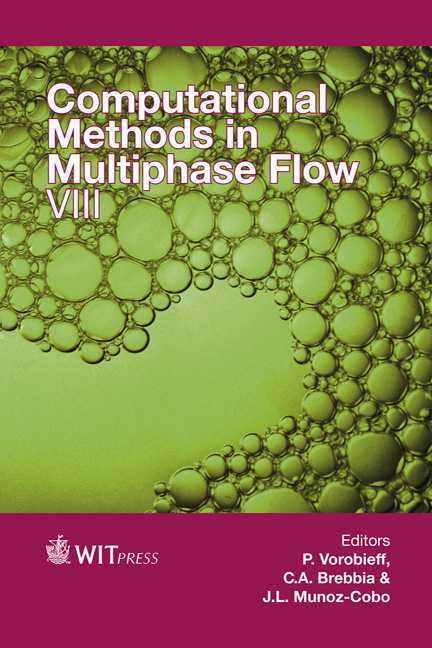Computational Modelling Of Gas–liquid Multiphase Flows With DQMOM And The N-phase Algebraic Slip Model
Price
Free (open access)
Transaction
Volume
89
Pages
12
Page Range
299 - 310
Published
2015
Size
908 kb
Paper DOI
10.2495/MPF150261
Copyright
WIT Press
Author(s)
K. Swiderski, D. Caviezel, M. Labois, D. Lakehal, C. Narayanan
Abstract
In the present work the Direct Quadrature Method of Moments (DQMOM) has been implemented into the CFD code TransAT. The TransAT code is a finite volume solver, based on structured multiblock grids, with a focus on multiphase flow modelling: including two-phase interface tracking, Lagrangian particle tracking and multiphase mixtures with an algebraic slip model generalized for an arbitrary number of phases (N-phase ASM). The DQMOM technique was combined with the turbulent N-phase ASM model in order to extend its ability to handle dispersed phase populations with each class having its own velocity field. In the scope of this work the DQMOM implementation has been validated by performing 0D, 1D and 2D test cases – from unit tests to very complex problems such as bubble columns. The drag force acting on the bubble population, turbulent dispersion, bubble aggregation, breakage and growth phenomena were considered. The results show that DQMOM is an efficient method for solving complex multiphase problems, and allows more sophisticated modelling than ASM. However attention should be paid to proper implementation into a CFD framework, especially when it comes to mass conservation, realizability of DQMOM abscissas and discretization of stiff particle interaction kernels.
Keywords
DQMOM, multiphase flow, mixture model, population balance, bubble column





